Washington, DC Pollen and Allergy Report for Summer 2023
Pollen Allergy Trends in Washington, DC
When is pollen lowest in Washington, DC?

February
Lowest month total PPM
Avg. PPM
When is pollen highest in Washington, DC?

April
Highest month total PPM
Avg. PPM
How does pollen in Washington, DC compare to District of Columbia?
Washington has a equal average PPM than the state of District of Columbia.
Washington yearly avg PPM:
District of Columbia yearly avg PPM:
How does pollen in Washington, DC compare to the USA?
Washington has a higher average PPM than the USA.
Washington yearly avg PPM:
USA yearly avg PPM:
Is pollen worse this year in Washington, DC?
Spring 2023 was better than spring 2022.
Spring 2023 PPM:
Spring 2022 PPM:
Average PPM in Washington, DC
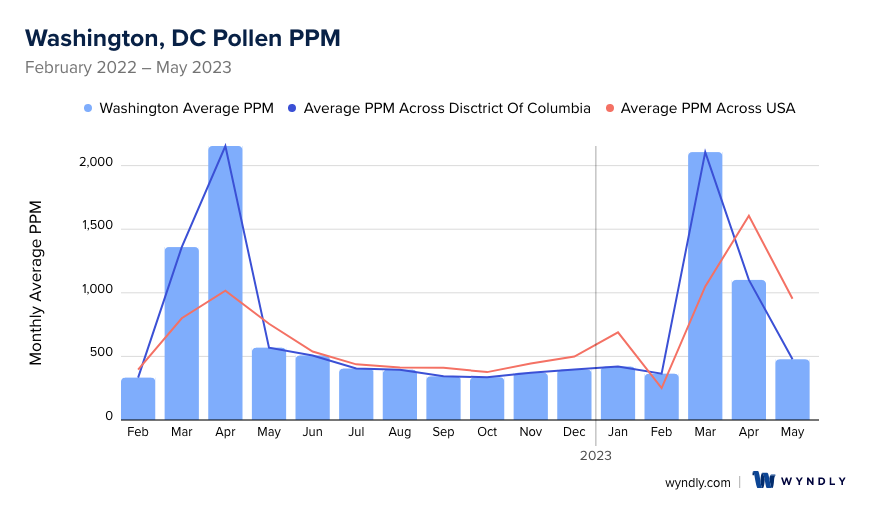
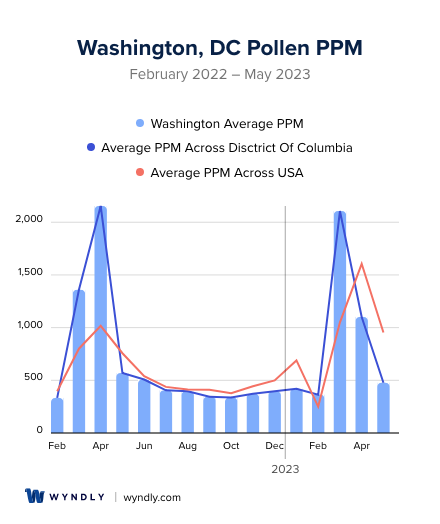
Washington, DC Pollen and Allergy Breakdown by Month
Grass
When is grass pollen highest in Washington, DC?
April has the highest grass pollen in Washington, DC with an average PPM of
When is grass pollen lowest in Washington, DC?
November has the lowest grass pollen in Washington, DC with an average PPM of
Tree
When is tree pollen highest in Washington, DC?
March has the highest tree pollen in Washington, DC with an average PPM of
When is tree pollen lowest in Washington, DC?
October has the lowest tree pollen in Washington, DC with an average PPM of
Weed
When is weed pollen highest in Washington, DC?
April has the highest weed pollen in Washington, DC with an average PPM of
When is weed pollen lowest in Washington, DC?
February has the lowest weed pollen in Washington, DC with an average PPM of
Washington, DC Pollen Monthly Breakdown by Pollen Type
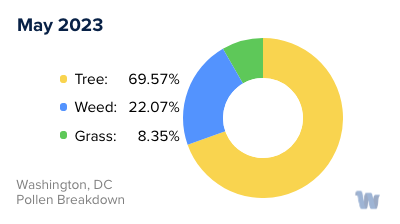
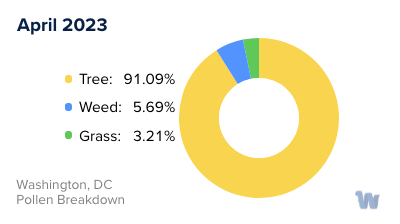
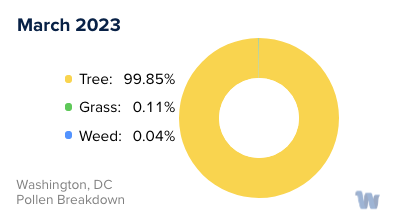
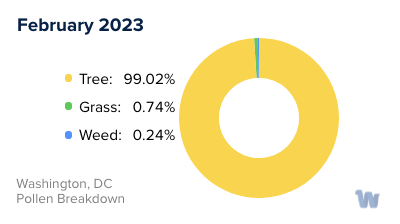
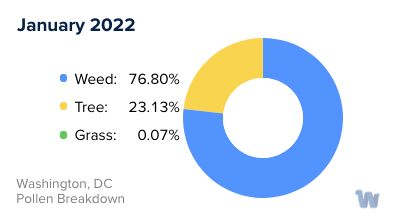
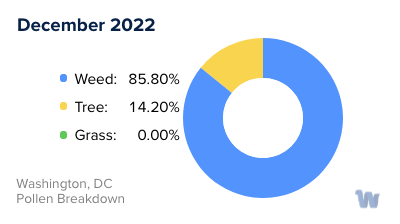
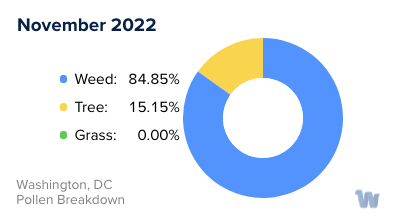
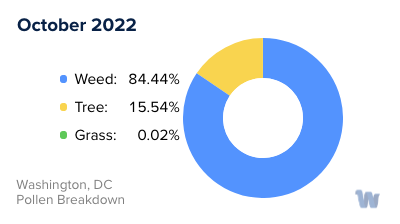
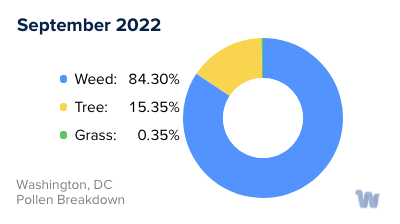
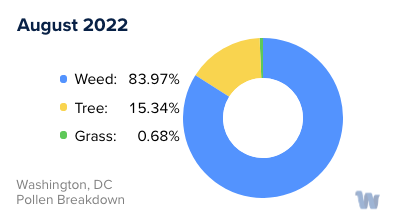
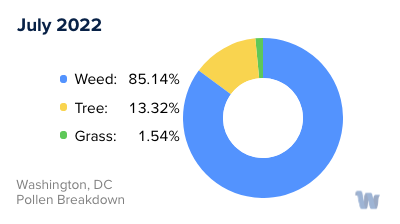
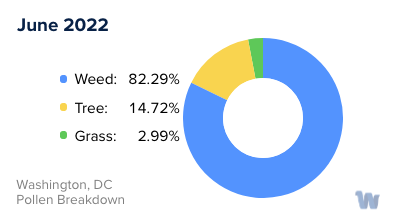
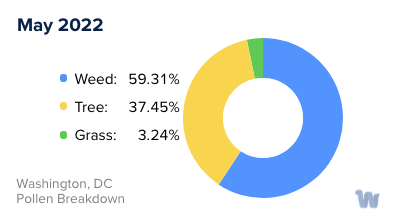
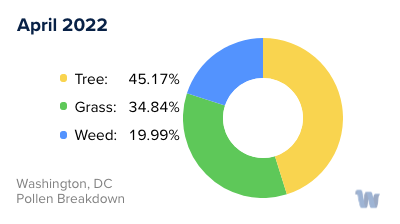
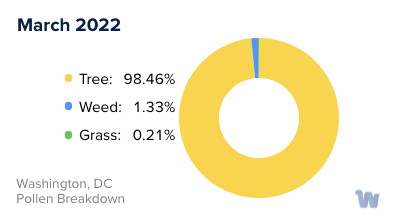
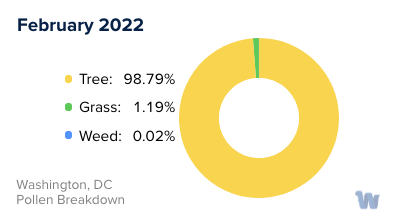
Pollen and Hay Fever in Washington, DC
In the picturesque city of Washington, District of Columbia, the arrival of spring and summer is often synonymous with the blooming of flora. This seasonal transformation is stunning, but it brings with it an unwelcome guest for many: pollen. Pollen allergies, often referred to as hay fever, are a common affliction for residents and visitors of the capital city.
Pollen, a fine powder released by plants for fertilization, can be categorized into three main types: tree pollen, grass pollen, and weed pollen. Each type has its own unique timetable in Washington, D.C.
Starting with tree pollen, as early as late winter and throughout spring, trees such as oaks, maples, and pines begin to release their pollen. The city, endowed with an abundance of these trees, sees a high concentration of tree pollen during this period. This is when the early birds of hay fever begin to experience the classic symptoms like sneezing, itchy eyes, and a runny nose.
As spring transitions into summer, grass pollen takes center stage. The lawns and parks that are integral to Washington's landscape begin to release grass pollen. This pollen is usually at its peak from late spring to early summer.
Lastly, as summer gives way to fall, weed pollen becomes prominent. Ragweed, a common weed in Washington, D.C.
releases its pollen in late summer and fall. This is a time when those who thought they had escaped the pollen season unscathed might start to experience symptoms.
In summary, Washington, D.C.'s vibrant seasons not only bring about scenic beauty but also varying types of pollen. Tree pollen is prevalent in spring, grass pollen in early summer, and weed pollen in late summer and fall. For those with pollen allergies, being mindful of these seasons can help in anticipating and understanding the ebb and flow of hay fever symptoms in the city.


